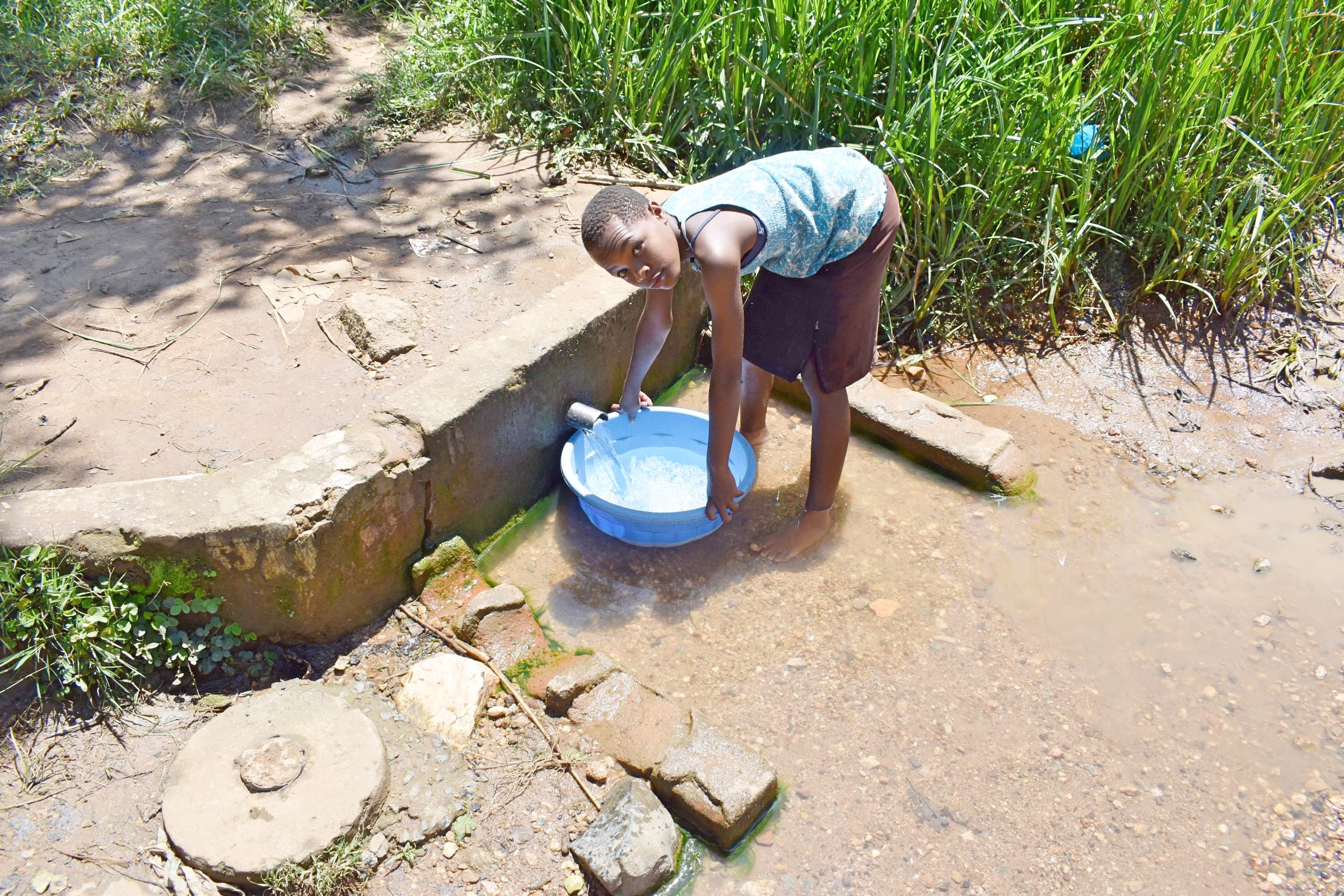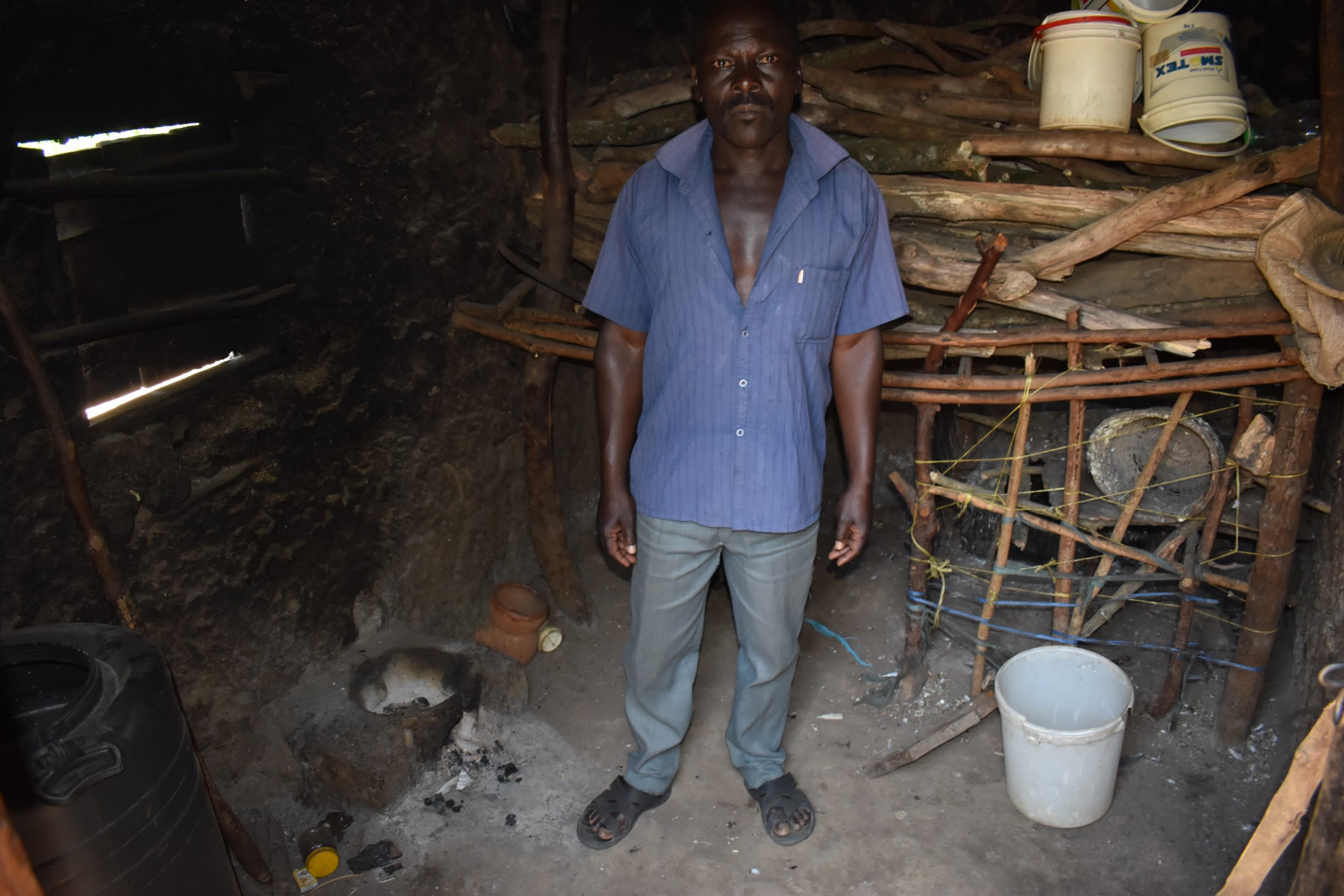The 280 members of Muyala community wake up as early as they can in an effort to avoid other people at the spring, but it never seems to be early enough. This is because it's not only this community that depends on David Alumasa Spring. In the dry season, neighboring springs evaporate to nothing, bringing people from all over the region to queue here.
"The state of our spring has caused me to delay [attending] class lessons, as most of the time, [I] am forced to queue at the spring so as I can fetch water," said 14-year-old Bonziana (pictured below).

For all the demand, you would think there would be something special about this water. But, unfortunately, the water is contaminated by humans, animals, and adjacent farms. The only thing special about David Alumasa Spring is that its water is always available.
The spring is named after the beer brewer who owns the land, David Alumasa. He told us that he hears constant quarreling at the water source, but if he is to run his business, he cannot possibly police everyone who comes to his land for water. And while fighting is unpleasant, it's not the worst effect of this water.

"Being the landowner, it has been so difficult to persuade women not to wash [at] the spring, as they are the people who contaminate the water source more," David (pictured above) told us. "The contamination has caused more harm than good, as I have suffered a lot due to [the] contraction of typhoid."
Almost everyone we spoke to has suffered from typhoid, which is not only painful, but it's also expensive to treat. Not everyone can afford the necessary medication.
When we explained to community members that we plan on protecting their spring, they were so excited. They said it would be a solution to their most pressing problems, and we can't help but agree!
What We Can Do:
Spring Protection
Protecting the spring will help provide access to cleaner and safer water and reduce the time people have to spend to fetch it. Construction will keep surface runoff and other contaminants out of the water. With the community’s high involvement in the process, there should be a good sense of responsibility and ownership for the new clean water source.
Fetching water is a task predominantly carried out by women and young girls. Protecting the spring and offering training and support will, therefore, help empower the female members of the community by freeing up more of their time and energy to engage and invest in income-generating activities and their education.
Training on Health, Hygiene, COVID-19, and More
To hold trainings during the pandemic, we work closely with both community leaders and the local government to approve small groups to attend training. We ask community leaders to invite a select yet representative group of people to attend training who will then act as ambassadors to the rest of the community to share what they learn. We also communicate our expectations of physical distancing and wearing masks for all who choose to attend.
The training will focus on improved hygiene, health, and sanitation habits in this community. We will also have a dedicated session on COVID-19 symptoms, transmission routes, and prevention best practices.
With the community’s input, we will identify key leverage points where they can alter their practices at the personal, household, and community levels to affect change. This training will help to ensure participants have the knowledge they need about healthy practices and their importance to make the most of their water point as soon as water is flowing.
Our team of facilitators will use a variety of methods to train community members. Some of these methods include participatory hygiene and sanitation transformation, asset-based community development, group discussions, handouts, and demonstrations at the spring.
One of the most important issues we plan to cover is the handling, storage, and treatment of water. Having a clean water source will be extremely helpful, but it is useless if water gets contaminated by the time it is consumed. We and the community strongly believe that all of these components will work together to improve living standards here, which will help to unlock the potential for these community members to live better, healthier lives.
We will then conduct a small series of follow-up trainings before transitioning to our regularly scheduled support visits throughout the year.
Training will result in the formation of a water user committee, elected by their peers, that will oversee the operations and maintenance of the spring. The committee will enforce proper behavior around the spring and delegate tasks that will help preserve the site, such as building a fence and digging proper drainage channels. The fence will keep out destructive animals and unwanted waste, and the drainage will keep the area’s mosquito population at a minimum.

 Protected Spring
Protected Spring
 Rehabilitation Project
Rehabilitation Project






































